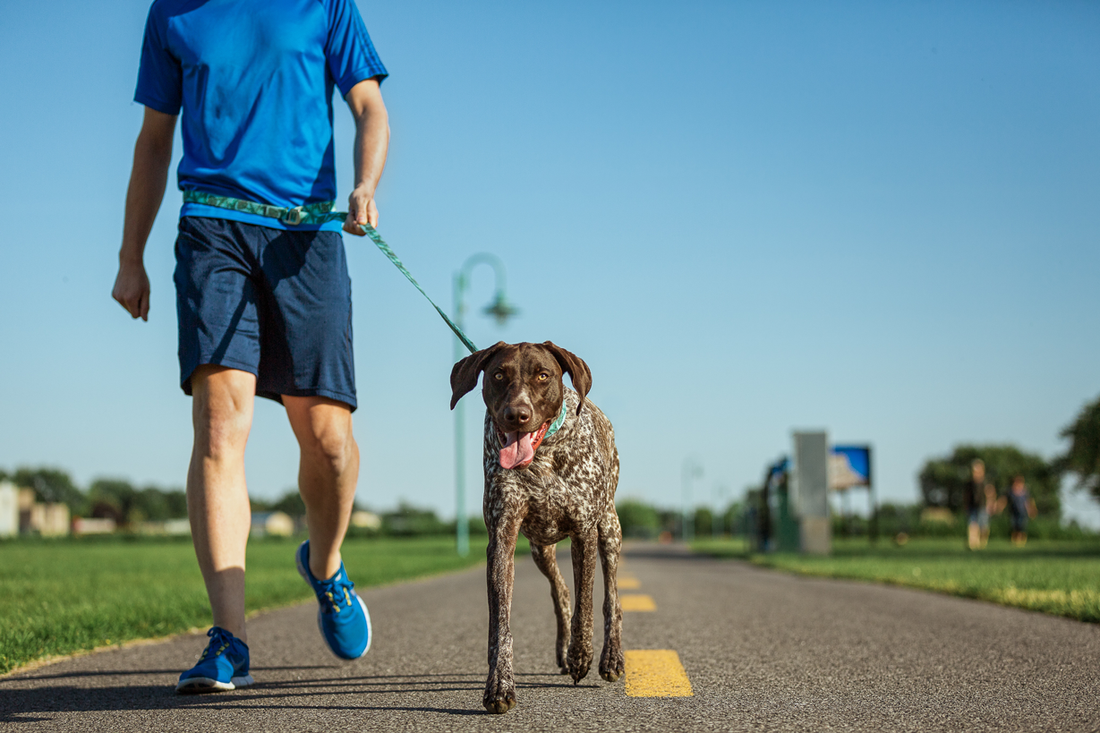The walks on a leash are definitely the most popular summer and winter exercise. Sunshine or rain, your dog needs to go out daily. However, walking become very unpleasant when your dog pulls on a leash excessively. Here's what you need to know to make walking time more enjoyable.
Why do dogs pull on a leash?
Very simple, because they have 4 legs and you only have two! Fundamentally, your dog does not pull on a leash, but he walks faster than you. It is important to adapt your requirements, when you go out, according to the animal next to you.
Some breeds or dog sizes make pulling a second nature. Also your dog's personality can influence his tendency to pull, to smell or play with a nearby dog.
The right tools
A leash and a harness is all you need. Simplicity and versatility should be the two key words. If it's too complicated, it's not worth it.
Using a harness is much more comfortable for your dog and more enjoyable for your arm when holding the leash. However, the harness alone is not enough to improve your walks. You need a harness that allows you to tie your dog at the chest. Thus, the front shoulders will be blocked when he tries to pull forward. It will also be easier for you to change direction with your dog.
As for the leash, it is important to adapt a length of 4 to 6 feet to allow a little space to your dog, while respecting a good distance from other people around you. A leash that can offer several possibilities such as a shoulder or waist strap and that offers a comfortable handle is ideal.
Good reflexes during a walk
- Stop moving forward when your dog pulls! If you continue to advance when he drags you, you are conditioning him to do so because it works.
- Do not give a reward because your dog came back to you! Reward him, when he is walking beside you.
- Use a treat pouch to allow you to quickly reward your dog's good deeds.
- Respect your dog's skills. If you cannot take a walk on the street, use your backyard or parking to help your dog to learn.
- Keep calm, your dog doesn’t have to walk behind you. He can walk beside you and at a good distance, it is your choice! The goal is simply to have a relaxed leash that creates a "u".
Exercise: "Focus"
Encourage your dog to make eye contact with you when you go out. Just make a small sound or say the name of your dog to get his attention and, as soon as he looks at you, say the word of your choice and reward your dog. Your companion will develop the reflex to look at you often and at the same time, slow down his pace.
Exercise: "go smell"
Your dog pulls to sniff every tree? Rather than zigzagging, set up important places for your dog in advance, and when you ask him to sit down and then point the space, saying “smell”. So your dog will have the reflex to sit down before going to sniff and he will wait for you to tell him to do it.
Remember that your dog needs to move every day. If you neglect your outings, your dog will deal with other activities such as barking and destruction. If you run out of time, find alternatives such as daycare or canine walks.
Visite our walking tips page !

